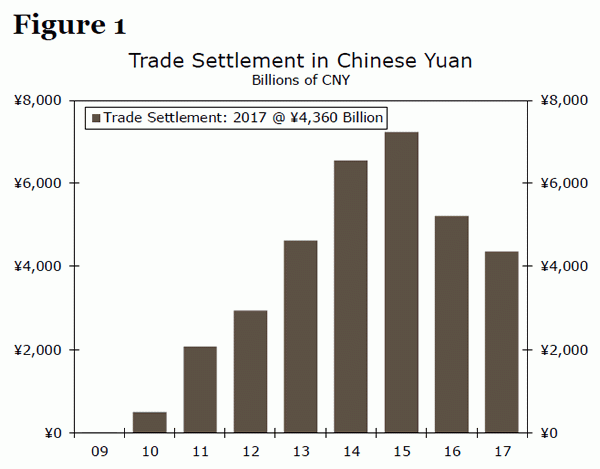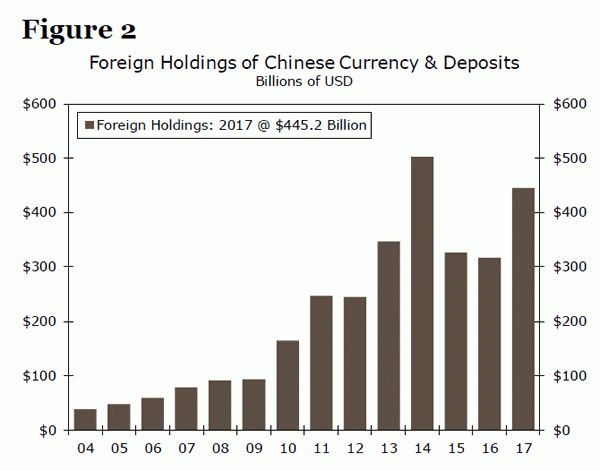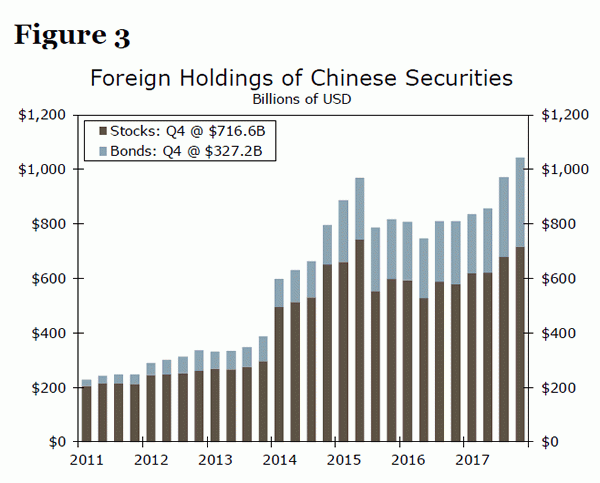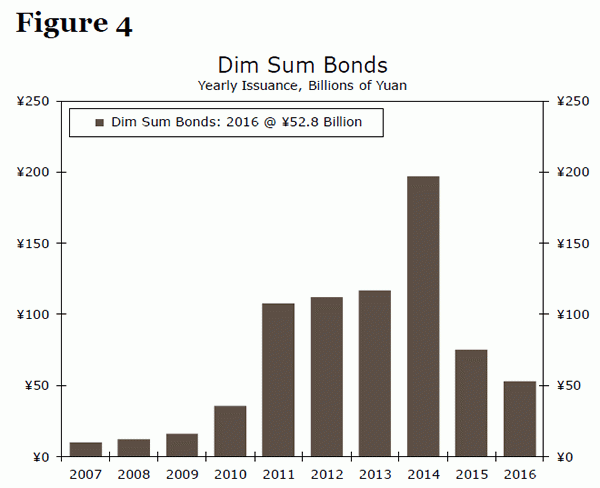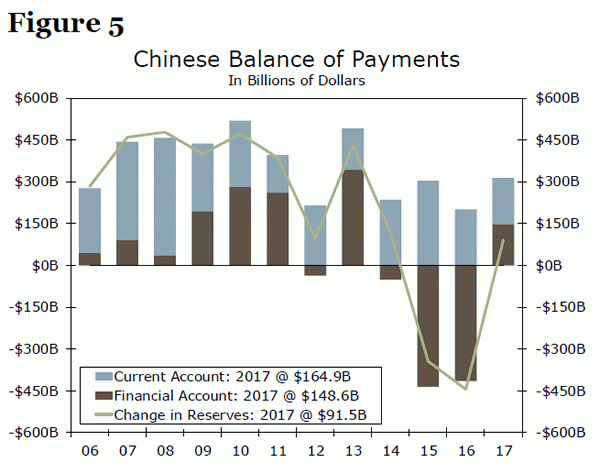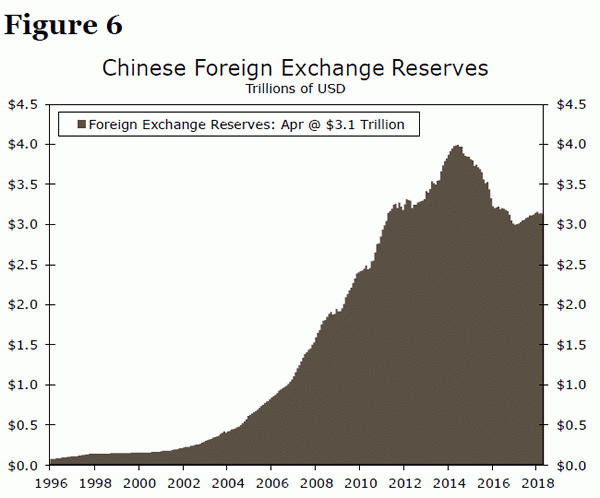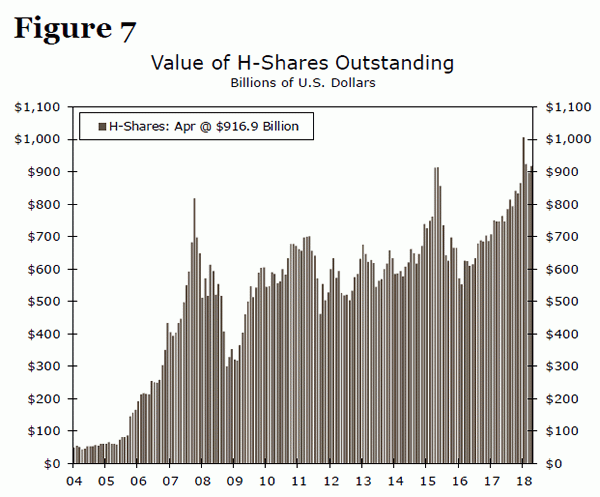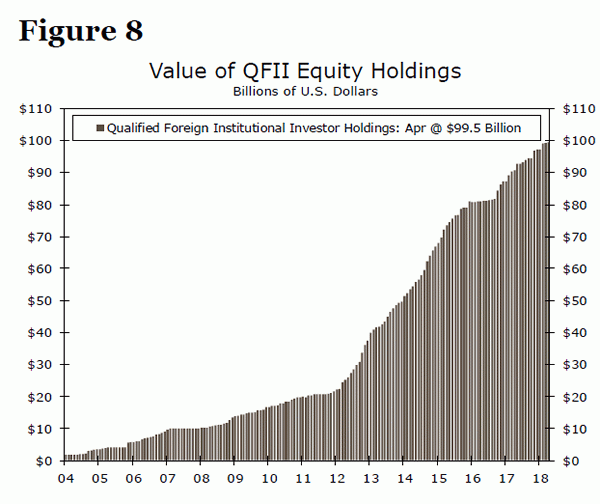Executive Summary
Three years ago we wrote a two-part series on China’s desire to increase its heft in the international monetary system via its role in the creation of the Asian Infrastructure Investment Bank (AIIB) and its efforts to promote the international use of the Chinese renminbi (RMB). Three years on, we thought it was time to provide an update on China’s efforts in this area.
China arguably has more heft in the international monetary system than it did three years ago. The AIIB is now operational and it is financing infrastructure projects in Asia, although the AIIB remains small relative to similar multilateral organizations. Furthermore, the RMB is now included in the special drawing rights (SDR) of the International Monetary Fund. But after an initial sharp acceleration in the international use of the RMB, progress stalled as volatility beset Chinese financial markets. Relative stability has returned to Chinese financial markets, and the international use of the RMB is rising again. However, due to the Chinese government’s focus on social stability, it likely will be years, if not decades, before the Chinese currency joins the ranks of the world’s most important currencies.
The AIIB and the SDR: Building Blocks to More International Heft
At the time of our April 2015 report, there were 57 countries that were either members or prospective members of the AIIB, but the organization was not yet operational. Today, there are 64 member states with 22 prospective members who want to get on board as well. As of December 31, 2017, the AIIB had $19 billion worth of paid-in capital in a subscribed capital base of $95 billion. At present, the AIIB has approved 25 projects that total $4 billion. In short, the AIIB is slowly ramping up operations.
But the institution still has a long way to go relative to its counterparts. The Asian Development Bank (ADB) had about $139 billion worth of outstanding lending commitments at the end of 2017, while the net loans outstanding of the International Bank for Reconstruction and Development (i.e., The World Bank) stood at $185 billion as of March 31, 2018. In fairness, the ADB and the World Bank have broader goals than the AIIB. Not only do those two organizations finance infrastructure projects, but they also endeavor to end extreme poverty and manage natural resources. Moreover, the World Bank finances projects around the world, not just in Asia. It seems self-evident that the World Bank, which was established in 1944 as one of the Bretton Woods institutions, and the ADB, which started operations in 1966, would have larger balance sheets than the relative upstart AIIB. Nevertheless, the AIIB is still small relative to its more established counterparts.
China had aspirations of the RMB being part of the SDR when we wrote our previous report in April 2015, but the currency was not part of the basket at that time. But on October 1, 2016, the RMB officially joined the U.S. dollar, the euro, the Japanese yen and the British pound as the currencies that comprise the SDR basket. Although the IMF’s decision to include the RMB in the SDR basket has had little practical importance for the Chinese currency, it has conferred a degree of legitimacy on the RMB by including it in the same exclusive club as the world’s most-used currencies.
Internationalization of the RMB Stalled in 2015
We noted in our earlier report that one way to increase the international use of a currency is to encourage exporters and importers to demand payment in that currency. The amount of trade invoices that were settled in Chinese yuan shot up sharply from essentially nothing in 2009 to more than ¥7 trillion (about $1.1 trillion) in 2015.2 However, the amount of international transactions that are settled in Chinese yuan has trended lower over the past two years. Foreign holdings of Chinese yuan in the form of cash and deposits ballooned in the early years of the decade before running off sharply in 2015 and 2016 (Figure 2). Foreign holdings of yuan bounced back last year, but they remained below their 2014 peak.
In terms of other assets, foreign holdings of Chinese stocks and bonds have risen fivefold since the beginning of 2011 with equities accounting for the lion’s share of those holdings (Figure 3). However, foreign ownership of Chinese stocks fell noticeably in 2015 and 2016 as the rate of economic growth in China slowed, a topic to which we will return. Foreign ownership of Chinese equities has subsequently recovered, but foreign holdings of Chinese stocks and bonds, which totaled a bit more than $1 trillion at the end of Q4-2017, were not much higher than they were in mid-2015. To put foreign ownership of Chinese securities into perspective, consider that foreigners currently hold nearly $20 trillion worth of American stocks and bonds. In other words, China is simply not in the same league as the United States in terms of the internationalization of its currency.
Not only can foreigners own the securities of Chinese companies, they can also hold yuandenominated securities that are issued by foreign companies. Those companies cannot go directly to market in mainland China, but they can issue securities in Hong Kong, which serves as an offshore financial center for mainland China. Yuan-denominated bonds that are issued in Hong Kong by foreign companies are known as “dim sum” bonds. Prior to 2011, issuance was miniscule (Figure 4). But issuance jumped in 2011 as the Chinese government relaxed restrictions on the issuance of these bonds. The best year for issuance was 2014, when about ¥200 billion came to market. But issuance of dim sum bonds has weakened more recently.
In sum, the international use of the RMB rose considerably in the early years of this decade. But the internationalization of the RMB appeared to have stalled around 2015. What happened?
As noted above, the Chinese economy decelerated in 2015 and 2016 as authorities reined in credit growth before the debt burden of the non-financial corporate sector became unsustainable. Not only did foreigners turn into net sellers of Chinese stocks, but capital outflows picked up as Chinese residents tried to get money out of the country. The unexpected devaluation of the RMB in August 2015 arguably encouraged more capital outflows as it led investors to expect more weakness in the currency, an expectation which eventually became self-fulfilling. The financial account of the Chinese balance of payments swung sharply into deficit as capital outflows vastly exceeded capital inflows (Figure 5).
Due to the marked deterioration in the balance of payments, the exchange value of the RMB came under downward pressure. To counteract some of the downward pressure on the RMB, Chinese authorities bought their own currency and sold foreign currencies, which showed up as a $1 trillion decline in the country’s foreign exchange reserves (Figure 6). Not only did Chinese authorities tap into their war chest of foreign exchange reserves, but they also tightened capital controls in an effort to stop capital outflows. With the government preoccupied in its efforts to put out the fire that was raging in its financial markets, policies to promote the international use of the RMB understandably took a back seat.
Will Internationalization of the RMB Accelerate Anew?
But the economy re-accelerated in 2017—real GDP grew 6.9 percent last year, up from the 6.7 percent rate that was registered in 2016—and capital outflows subsided. The financial account of the balance of payments returned to surplus, and the country’s foreign exchange reserves have been edging higher again. With stability returning to the Chinese economy and financial system, the time may be ripe for Chinese authorities to reinvigorate efforts to promote the internationalization of the RMB.
There already are signs that foreign interest in Chinese securities is ramping up again. After dipping markedly in 2015 and 2016, the value of outstanding H shares, which are stocks of Chinese companies that trade on the Hong Kong stock exchange, recently rose to an all-time high (Figure 7). Of course, these securities are denominated in Hong Kong dollars, not RMB. But QFII holdings, which are the yuan-denominated shares that qualified foreign institutional investors own in the mainland Chinese stock markets, have also risen to an all-time high (Figure 8).
Moreover, there is the political imperative to continue opening up the Chinese financial system to foreign participation, which inevitably will lead foreigners to own more Chinese yuan-denominated assets. China is currently engaged in negotiations with the Trump administration to avert a trade war between the two countries, and the administration has demanded that China open up its financial sector to more foreign investment. China has been slowly opening up its financial sector to foreign participation over the past decade or so, and the Chinese government has publicly acknowledged that more needs to be done if China wants to become one of the world’s leading economies. Agreeing to accelerate the pace of financial market liberalization would appear to be a reasonable concession to make to help head off a trade war with the United States.
In our view, however, any further liberalization that China makes to its financial sector likely will proceed gradually rather than in a sudden fashion. Social stability is the preeminent policy objective of the Chinese government, and it rarely proceeds in a manner that could potentially jeopardize social stability. In short, the internationalization of the RMB will proceed, but it likely will be years, if not decades, before the Chinese currency joins the ranks of the world’s most important currencies (e.g., the U.S. dollar and the euro).
Conclusion
About a decade ago the Chinese government made the conscious policy decision to open its financial system, which led to a sharp acceleration in the international use of the RMB. Increasing amounts of yuan were used to settle international trade transactions, and foreign holdings of Chinese currency and securities jumped sharply. The internationalization of the RMB then stalled in 2015 and 2016 as the Chinese economy decelerated and volatility swept through Chinese financial markets. But stability has returned to the Chinese economy and financial markets, and foreign holdings of Chinese yuan and Chinese securities are rising again.
In our view, the internationalization of the RMB will proceed in coming years, but at a gradual pace. Social stability is the preeminent policy objective in China, and the Chinese government is not likely to undertake sudden changes to its financial system that potentially could threaten social stability. Moreover, if volatility were to return to Chinese financial markets, the government could make policy changes (e.g., tighten capital controls) that could cause the internationalization of the RMB to stall again. The RMB could very well become one of the world’s most important currencies, but the journey likely will be long.




